Prison Structure and Shelters
Introduction
Text-to-speech Audio
Images
NPS Signage at Stockade Walls
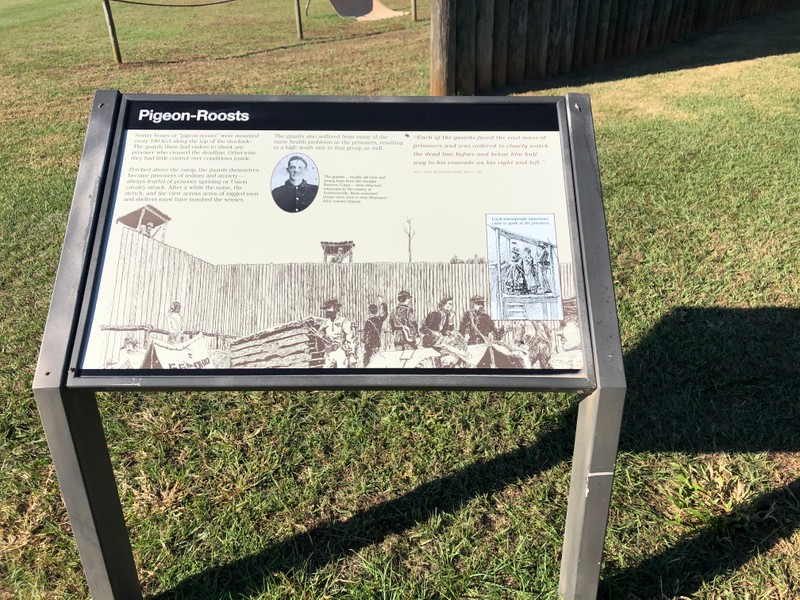
Reconstruction of "shebangs" or tents made from soldier's clothing and blankets
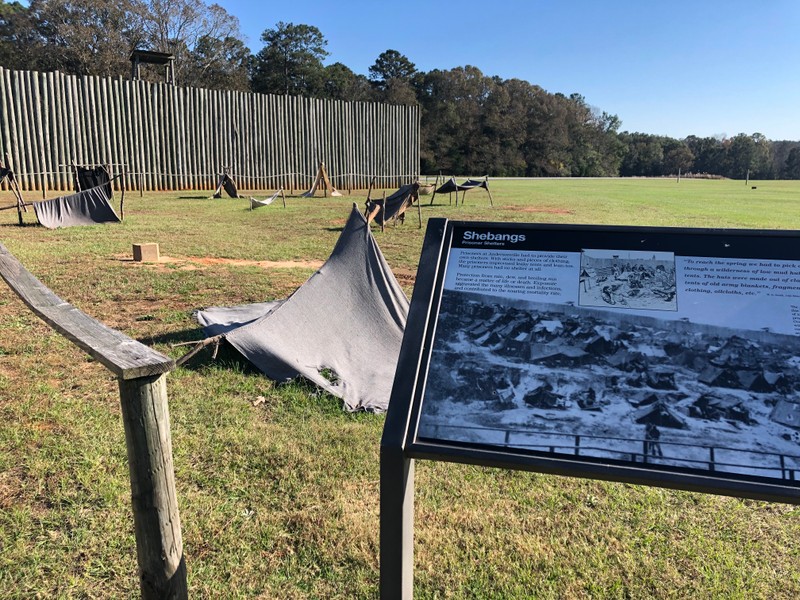
Stockade reconstruction
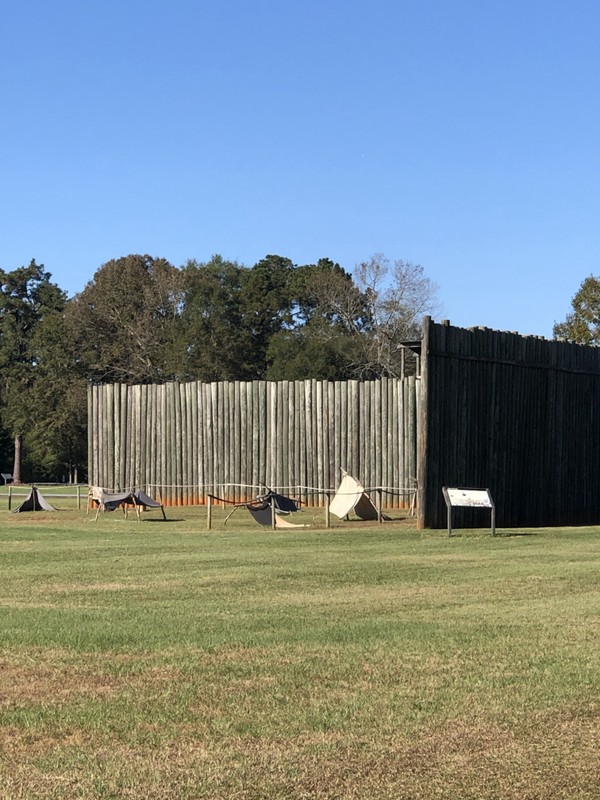
Andersonville Prison, Ga., August 17, 1864. Bird's eye view
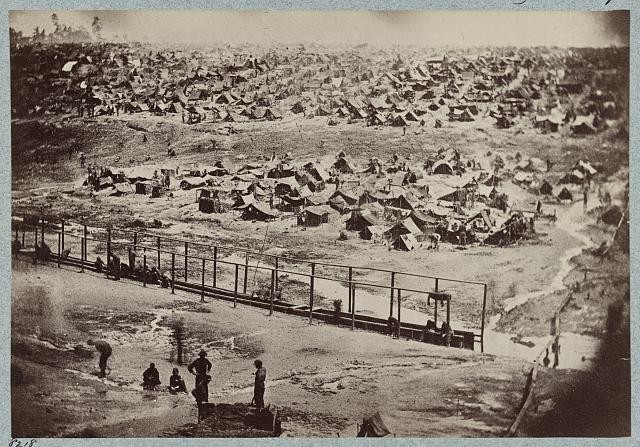
Andersonville Prison, Ga., August 17, 1864. Southwest view of stockade showing the dead-line
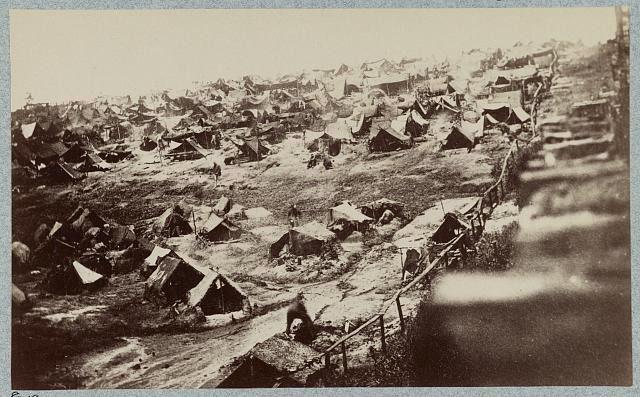
Backstory and Context
Author-Uploaded Audio
"The Appalling Living Conditions at Andersonville Prison," Georgia Public Broadcasting Education, February 28, 2019. YouTube. Accessed December 20, 2020.https://youtu.be/4zROaHtPLEQ
Text-to-speech Audio
The stockade of Camp Sumter in Andersonville was constructed of trees cleared from the field in preparation for prisoner arrival. When prisoners arrived at the camp, later falling victim to disease and dying, the tall and foreboding, the stockade was their first and often last sight. Augustus Hamlin recalled vividly the stockade as he wrote:
“The timbers composing the stockade were of entire trunks of pines, massive and solid…they were sunk into the earth for about five or six feet, and held in position by long, slender pines, nailed on the outer side by large iron spikes. At intervals of about one hundred feet, were erected detached and covered platforms, upon the outer side of the palisades, which served as sentry boxes. The sentries, perched buzzard-like on the wall, could observe from their high positions, at all times, the actions,…and with their rifles shoot down the offending prisoner.”[1]
Other soldiers remembered the stockades in their memoirs, published or unpublished, likely because the stockade walls constantly reminded prisoners of their captivity. Likewise, the meager shelters each man attempted to construct remained vivid in survivors’ minds. Clark Thorp, a Union soldier who spent 11 months in the prison, wrote:
“The space inside was covered, in great part, by rude shelters of all descriptions and sizes, from the some-what commodious tent made by sewing two army blankets together and stretching them over a ridge-pole and pinning the outer ends to the ground, under which several men could crawl for shelter, to a little affair, made by stretching shirts, blouses, etc., in like manner, which could scarcely shelter two men.”[2]
The stockade also created another layer of isolation for prisoners in Camp Sumter. Prisoners were separated both physically and emotionally from the outside world. Confederate guards constructed a deadline, a second barrier between the field and the stockade walls, using tall posts. This deadline added extra space between guards and prisoners, as they feared riot or rebellion. Unlike in some other prisons, such as Belle Island in Richmond, Virginia, at Camp Sumter, men held inside were unable to see over or through the stockade. While guards stationed in "pigeon roosts" watched from above, the men inside struggled to survive in the harsh conditions. Life took on a “special hellish quality” because of the extreme isolation, with communication between inmates and men stationed to work details outside the walls forbidden.[3] Escape was nearly impossible.
Sources
[1] Augustus C. Hamlin, Martyria; or, Andersonville Prison (Boston: Lee and Shepard, 1866), 53. Project Gutenberg, accessed December 15, 2020.
[2] Clark N. Thorp, Inside Andersonville, edited by Georgie Skoch, excerpted in Civil War Times 46, no. 8 (October 2007): 42.
[3] Robert S. Davis, “Escape from Andersonville: A Study in Isolation and Imprisonment,” The Journal of Military History 67, no. 4 (October 2003): 1068.
James McPherson, Battle Cry of Freedom: The Civil War Era. Oxford: Oxford University Press, 1988.
Personal Photograph Erin Del Giudice, Nov. 14, 2020
Personal photograph, Erin Del Giudice Nov. 14, 2020
Personal Photograph, Erin Del Giudice, Nov. 14, 2020
Library of Congress Prints and Photographs Division Washington, D.C. 20540 USA http://hdl.loc.gov/loc.pnp/pp.print
Photographed 1864, Library of Congress Prints and Photographs Division
